Wave Loop Player
About This Guide
This application note describes the Wave Loop Player module in AudioWeaver and demonstrates its uses.
The Wave Loop Player module is a WAV file player. The module plays out the .wav file in a loop mode. The module can be found in Sound Design->WavePlayer-> Wave Loop Player in the Module Bar on the left-hand side of the AudioWeaver Designer.
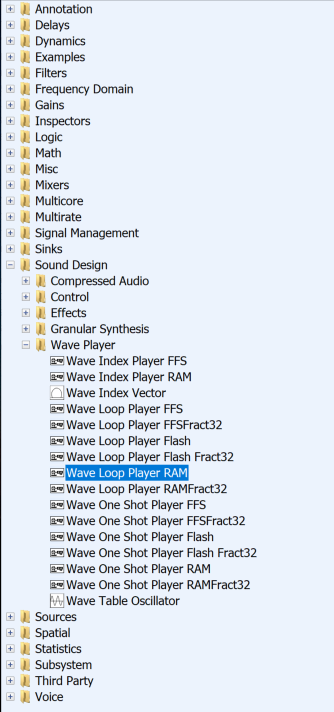
Figure 1: Wave Loop Player module location
Module Functional Description
The Wave Loop Player module is WAV file player. This module has three different variants along with their Fract32 versions.
Wave Loop Player RAM
Wave Loop Player RAM Fract32
Wave Loop Player Flash
Wave Loop Player Flash Fract32
Wave Loop Player FFS
Wave Loop Player FFS Fract32
Wave Loop Player RAM & Fract32
The RAM based Wave Loop Player reads the audio data embedded from samples stored within the module.
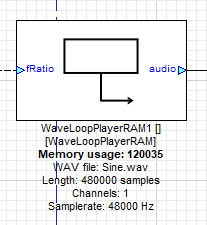
Figure 2: Wave Loop Player RAM
Input/output Pins:
The Wave Loop Player RAM has two input and one output pins.
fRatio input pin is a control value and is used to trigger the audio playback file. It is a Boolean value pin and requires a Low to High input for the playback to start and continues until the end of the WAV file and then stops. Retriggering while being in the middle of the playback has no effect and is ignored.
Audio output pin is the first output pin in this module and produces the processed audio samples from the wave files.
isPlaying is the second optional output pin which is a Boolean flag indicating the playback state. The value is set to 1 if playback is ongoing and 0 if not.
Variables:
The variables are the first tab in Module properties which is Rt Click on the module View Properties.

Figure 3: View Properties

Arguments:
Arguments can be found Rt Click View Properties second tab in the properties as shown. The following table shows the list of arguments in the Wave One Shot Player RAM module, explanations’ along with their respective default values.

Figure 4: Argument Tab for Wave Loop Player RAM
Arguments | Description | Default Value |
numChannels | Number of interleaved channels in the audio output pin. | By default, numChannels = 1. |
blockSize | Number of samples per output channel. | By default, blockSize = 256. |
sampleRate | Sample rate of the output signal, in Hz. | By default, SAMPLERATE = 48000. |
fileName | Name of the wave file to be played. | By default, WAVFILE = ''. |
InterpolationMode | interpolation method. Linear Cubic | By default, INTERP = linear. (Only in floating point variant) |
normalizedPlaybackRate | normalized playback rate. | By default, NRATE = 1. |
maxPlabackRate | Maximum playback rate (relative to NRATE). | By default, MRATE = 1. |
isplayingpin | Boolean that provides the current playback state (PLAYING=1, STOPPED=0) | |
enablePin | Does the module have an enable input pin | By default, False |
Workings
In the example shown below, we are using a Sine 1kHz wav file in the Wave Loop Player RAM module. Input the wave file path into the argument filename. For input to the fRatio we are using a controlled pitch to convert the continuous sine tone into intermediate bursts. The Pulse Gen module is onTime at 31msec which is used as a trigger for the Triggered Pulse generator. Both the triggered pulse and the continuous sine tone out from the Wave Loop Player are given to the controlled scalar module. The triggered pulse acts as the control to the scalar module input which the sine tone in our case. The output is the trigger-controlled bursts of sine tone.

Figure 5: Wave Loop Player RAM Example
Wave Loop Player FFS & Fract32

Figure 6: Wave Loop Player FFS
Wave Loop Player FFS works on both AWE Core and AWE CoreOS provided that the target has enough memory to accommodate FFS container (.bin).
Input/output Pins:
The Wave One Loop Player FFS has three input and one output pins. The added input pin is explained below whereas the rest remain the same as for RAM.
fsInstance is the second input pin and is an integer data type. This input pin provides the instance address of the flash file system wrapper and must be valid to be ready to use.
Variables:
The variables are the first tab in Module properties which is Rt Click on the module View Properties. In this case the variables are the same as in the case of RAM module.
Arguments:
Arguments can be found Rt Click View Properties second tab in the properties.
Arguments | Description | Default Value |
numChannels | Number of interleaved channels in the audio output pin. | By default, numChannels = 1. |
blockSize | Number of samples per output channel. | By default, blockSize = 256. |
sampleRate | Sample rate of the output signal, in Hz. | By default, SAMPLERATE = 48000. |
fileName | Name of the wave file to be played. | By default, WAVFILE = ''. |
InterpolationMode | interpolation method. Linear Cubic | By default, INTERP = linear. (Only in floating point variant) |
normalizedPlaybackRate | normalized playback rate. 1 corresponds to 1x playback rate. | By default, NRATE = 1. |
maxPlabackRate | Maximum playback rate (relative to NRATE). | By default, MRATE = 1. |
fracbits | Number of least-significant bits for the *fractional* part of the NCO word (word size: 32). | By default: 12 bits. (Only in fixed point variant) |
isplayingpin | Boolean that provides the current playback state (PLAYING=1, STOPPED=0) | By default: False |
muteMod | Used to mute output before changing file in run time. | By default: Blank |
unMuteMod | Used to unmute after reconfiguration. | By default: Blank |
Workings
We are using the same example as for the RAM variant for the Wave Loop Player. In this case we the Sine wave file is being fed through the FFS Wrapper as a .bin file. The output is the same as compared to the RAM variant. The triggered pulse acts as the control to the scalar module input which the sine tone in our case. The output is the trigger-controlled bursts of sine tone.
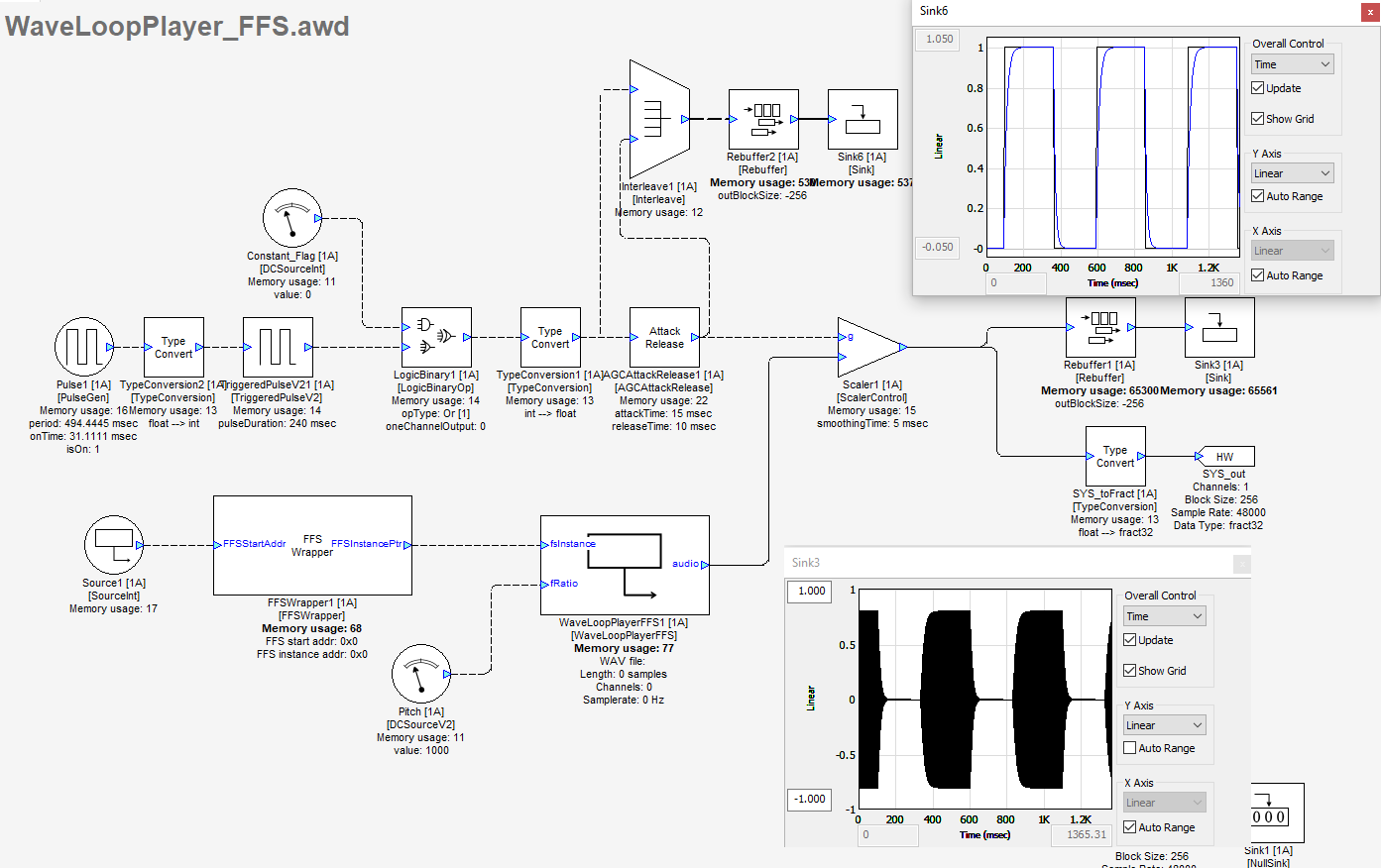
Figure 7: Wave Loop Player FFS Example
Wave Loop Player Flash & Fract32
This Wave One Shot Player variant extracts wave data from AWE Flash File System container on the target Flash device, based on wavfile argument. User must specify the file name as an argument and can also change file name directly into fileName array as 32-bit packed data during run time.
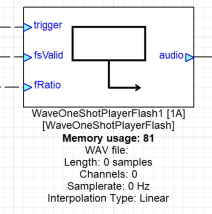
Figure 8: Wave Loop Player Flash
Input/output Pins:
The Wave One Shot Player FFS has three input and one output pins. The added input pin is explained below whereas the rest remain the same as for RAM.
fsValid is the second input pin and is an integer data type. Boolean indicates flash file system is ready.
Variables:
The variables are the first tab in Module properties which is Rt Click on the module View Properties. In this case the variables are the same as in the case of RAM module.
Arguments:
Arguments can be found Rt Click View Properties second tab in the properties.
Arguments | Description | Default Value |
numChannels | Number of interleaved channels in the audio output pin. | By default, numChannels = 1. |
blockSize | Number of samples per output channel. | By default, blockSize = 256. |
sampleRate | Sample rate of the output signal, in Hz. | By default, SAMPLERATE = 48000. |
fileName | Name of the wave file to be played. | By default, WAVFILE = ''. |
InterpolationMode | interpolation method. Linear Cubic | By default, INTERP = linear. (Only in floating point variant) |
normalizedPlaybackRate | normalized playback rate. | By default, NRATE = 1. |
maxPlabackRate | Maximum playback rate (relative to NRATE). | By default, MRATE = 1. |
fracbits | Number of least-significant bits for the *fractional* part of the NCO word (word size: 32). | By default, 12 bits. (Only in fixed point variant) |
isplayingpin | Boolean that provides the current playback state (PLAYING=1, STOPPED=0) | By default, False |
muteMod | Used to mute output before changing file in run time. | By default, Blank |
unMuteMod | Used to unmute after reconfiguration. | By default, Blank |
maxWaveChannels | Max number of channels a wave file can have. | By default, maxWaveChannels = 10. |
maxRatio | Max pitch factor supported. | By default, maxRatio = 10. |
Workings
For Wave Loop Player Flash module, we need AWE Pro version with MATLAB. The example ‘WaveLoopPlayer_Flash.awd ‘ uses TableSource module with the names of all the wav files in order which is then fed via the Arrayset module to the WaveLoopPlayer’s fileName argument. To fill the TableSource module with the list of wave files in an excel sheet called ‘Create_wavemapping_table ‘ as shown below in figure 9.
The ‘create_wavemapping_table.m’ script reads the list if wave names in the excel sheet and converts them into appropriate format to be loaded into the TableSource coefficient’s table which looks like figure 10. The MATLAB script then saves a new awd with the loaded coefficients under the name _mapped.awd

Figure 9: Create_wavemapping_table excel sheet
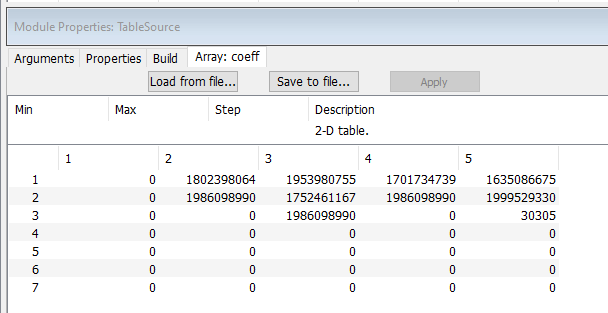
Figure 10: List of Wave names loaded into TableSource coefficients.
%% Params
% Update AWD filename here
awd_filename = 'WaveOneShotPlayer_Flash';
awd_path = '';
%% Background sounds
% Reading in Excel File
[xlsnum, xlstxt, xlsraw] = xlsread('Wavefile_Index_Mapping_Loop.xlsx');
% Creating Wavemappingtable values for AudioWeaver Layout
rows = size(xlsnum,1);
name_table_background = zeros(7,rows);
for i=2:rows+1
indx = xlsraw{i,1:1};
if isnan(xlsraw{i,1:1})
name = '';
else
name = convertStringsToChars(xlsraw{i,2:2});
end
name_table_background(1:7,indx+1) = string_cast_uint32(name,7);
end
%% Write AWD
% Open AudioWeaver Layout
gsys = load_awd([awd_path, awd_filename, '.awd']);
% Set Wavemappingtable values in Layout
gsys.SYS.TableSource.coeff = name_table_background;
% Get the current date and time
current_datetime = datetime('now', 'Format', 'yyMMMdd_Hmm');
% Convert the datetime to a string
datetime_string = char(current_datetime);
% Construct the new file name with date and time
new_filename = [awd_filename, '_', datetime_string, ''];
% Save new AWD file with applied Values
save_awd([awd_path, new_filename, '_mapped.awd'],gsys);
fprintf(1, 'Done\n');
disp('Finished')
returnWhen the _mapped.awd is run, the wave files are played in a loop by the Wave Loop Player Flash in the order fed in the excel sheet. The input index can be changed by changing the router channels to play the corresponding wave file as shown in figs 11 and 12.
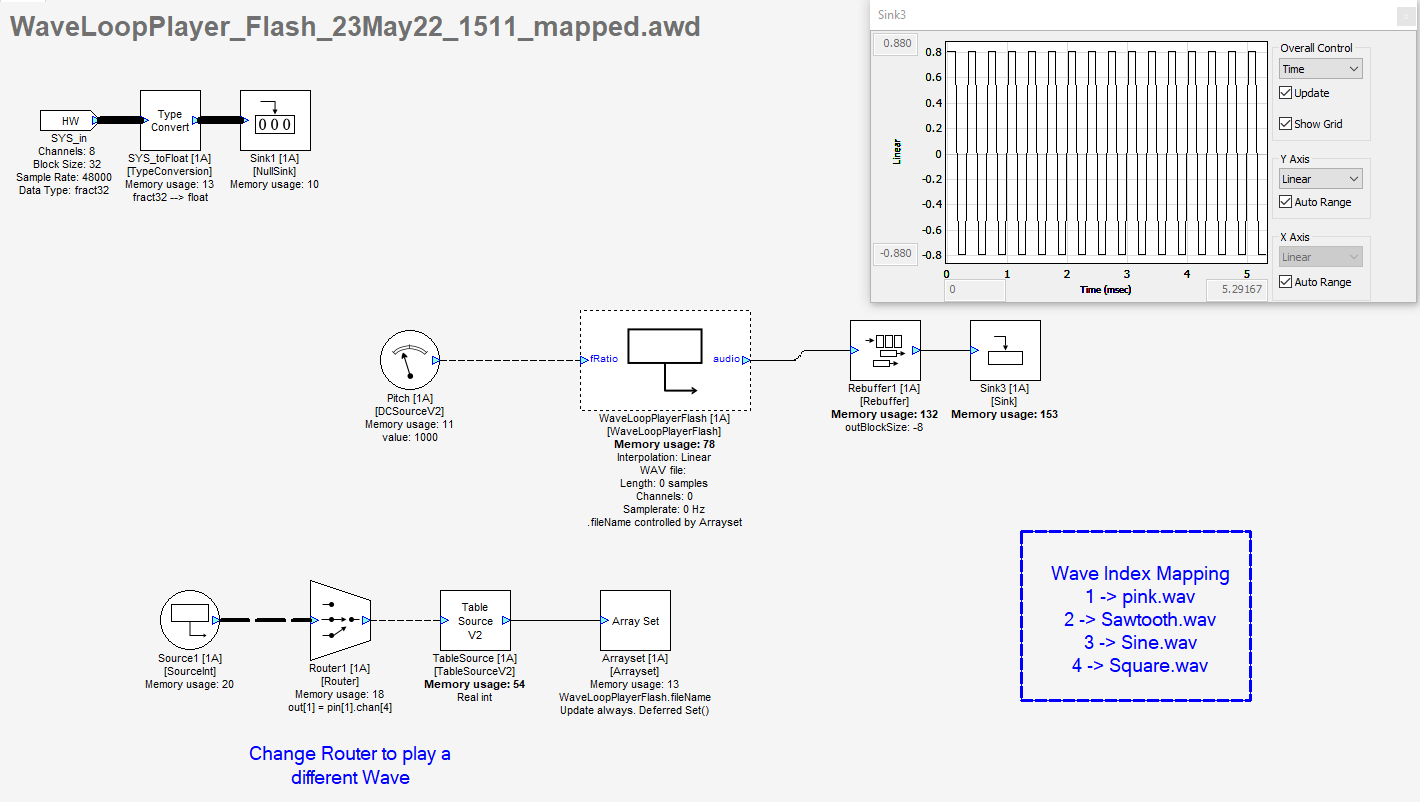
Figure 11: Wave One Shot Player Flash Example
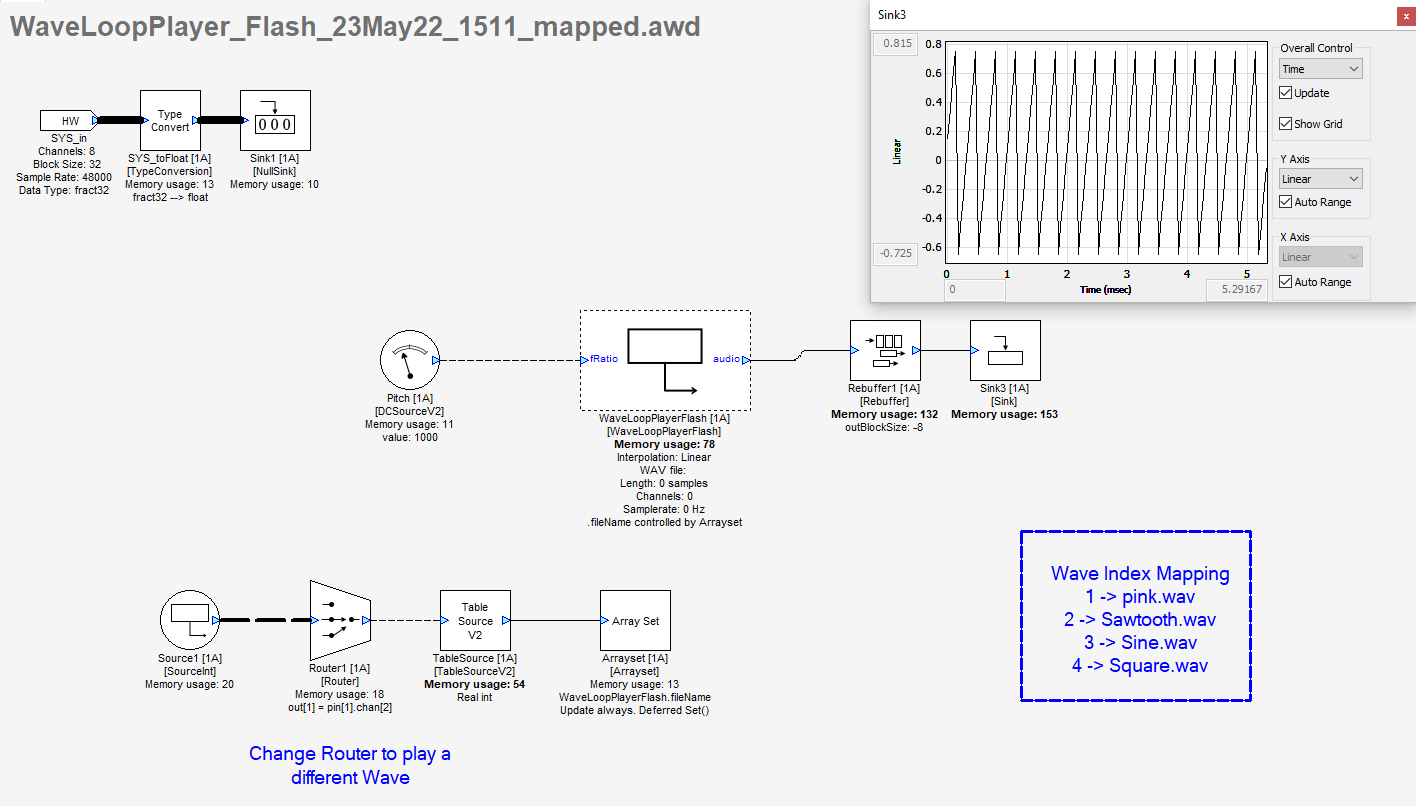
Figure 12: Wave Loop Player Flash example with Sawtooth Wave
Sawtooth.wav pink.wav Square.wav WaveLoopPlayer_Flash.awd WaveLoopPlayer_FFS.awd WaveLoopPlayer_RAM.awd Sine.wav create_wavemapping_table.m
